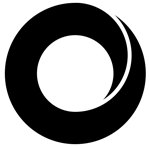Whatever inspiration is, it’s born from a continuous I don’t know. (Polish poet Wisława Szymborska)
The Biodynamic paradigm expresses our essential clinical inability to be certain. The paradox is that the more we lean into uncertainty, the more successful our work becomes.
The Biodynamic practitioner acknowledges that our mind doesn’t know with certainty what is wrong and how to fix it. But the flip side is that Biodynamics offers us access to an embodied intelligence that does know with certainty. Primary Respiration knows where to go and what to do. It is our willingness not just to recognize Primary Respiration but to defer to it that generates outstanding clinical results.
Take my client, who had a persistent sinus infection that wouldn’t heal. Long Tide put me at the sacrum. The sinuses cleared in short order. It stands to reason that through a myofascial chain of connection, a locked-up sacrum could prevent the sinuses from clearing. But that is different from a client saying, “Can you work on my sinuses?” and the practitioner going to the sacrum. This seems outlandish to the mind.
Similarly, a woman with persistent hip pain is a candidate for a hip replacement. She comes for regular massages, which moderately ease the discomfort. On one memorable occasion, a Long Tide session invites a contact to ethmoid and the nasal bones. I had no idea what the connection was; but the beauty of the work is that my mind does not need to know. I am led to the facial bones, work is completed, hip pain is substantially relieved.
(I happen to be trained as a craniosacral practitioner, so I often name bones as my reference points. But what if the root issue lies in a chakra, a gland, a suppressed emotion – or more likely, a multidimensional combination of things known and unknown? No problem, because in Biodynamic work, healing is an inside job based on our wholeness. So we’re not limited to working with separate “things” or single points of access.)
When we move away from Cranial Wave to Fluid Tide as the fundamental healing agency, we give up the goal of measuring and assessing range of motion — but (in my experience) we enjoy clinical results that are generated by an intelligence that intimately knows our clients’ needs and priorities. And thus, the results are uncanny; more sustainable; and less prone to treatment reactions.
(Actually, in Fluid Tide the practitioner can know all kinds of things: what part of the body is being worked on, how the client inhabits their body, their secret wounds, back story, and more. For all these reasons, when your work lands in the Fluid Tide you may gain confidence, if not certainty.)
In Long Tide, however, the practitioner is moved by another presence. We lose the capacity to guide or even interpret the session. We simply do not know what is occurring. What’s more, if we try to know, we get in the way of the treatment.
The Dynamic Stillness brings us into the full power of unknowing and its creative edge. A client comes in with symptoms, surrenders to a powerful blackness, and returns from the blackness with no symptoms. No process, no ecstasy, just a dip into that undifferentiated matrix. But given the profound results, no one’s complaining.

What about you? Do you have examples of grappling with doubt or uncertainty in your practice? I’d love to hear.
2 Comments
Leave a Comment

BE THE FIRST TO HEAR
ABOUT UPCOMING EVENTS
AND PUBLICATIONS.
Unsubscribing is always available with a single click.
I have way to many examples of uncertainty to pick one, but what I do know is that the more I continue to open to the mystery of this work, doubt gives way to uncertainty which gives way to not knowing. It’s a slow process of unfolding and un-identifying with the mind. I am surprised by how liberating not knowing can be and not surprised by how the mind tries to return to uncertainty and doubt so that it can do something. I am intrigued by the term unknowing and see it as the next level of letting go from not knowing. I look forward to sitting with this.
I love this so much, Stephanie! The gradations and nuances of not knowing are so beautifully expressed. I’ve already read your insightful words several times.
What an amazing statement: “I am surprised by how liberating not knowing can be.” I have definitely found that to be true. I wish I could share more about some sessions where it was apparently my willingness to NOT know that seemed most clinically powerful.
Plus, your perception is so helpful that the mind actually values doubt because that’s a role it can play. I haven’t consciously noticed that, but I bet a lot of us resonate with it.
There’s a famous book (which I haven’t read) called The Cloud of Unknowing. Guess it’s time to read it.
Thanks for your comments, I hope for more discussion around these topics.